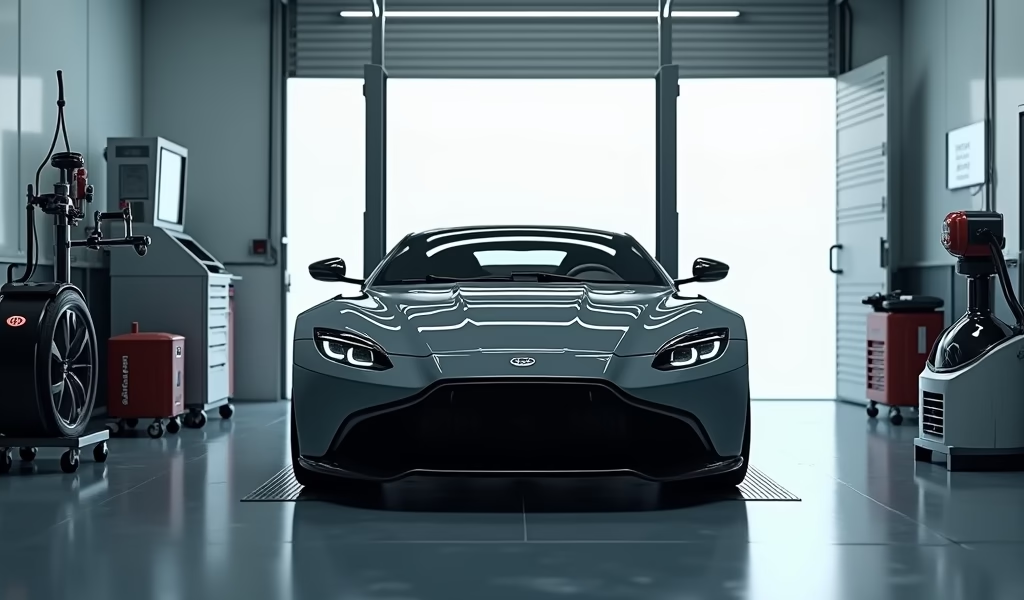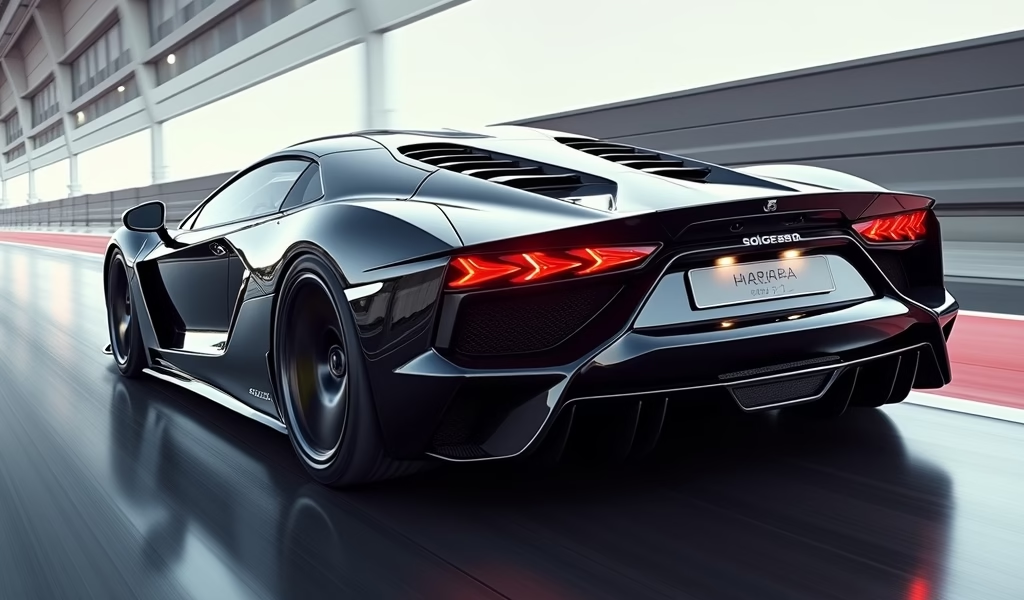Overview
This article outlines five professional-grade maintenance treatments for vehicles that might experience high-stress driving conditions, focusing on preventative maintenance, tire management, brake system upgrades, engine cooling systems, and legal safety modifications. Written by an experienced mechanic, it emphasizes that proper vehicle maintenance for high-performance scenarios is primarily about safety and reliability rather than encouraging dangerous driving behaviors.
Table of Contents
- Understanding Car Chases: The Reality Behind the Action
- Why Police Pursue: Understanding Law Enforcement Protocols
- Treatment 1: Preventative Maintenance for High-Performance Scenarios
- Treatment 2: Tire Management and Handling Optimization
- Treatment 3: Brake System Upgrades and Maintenance
- Treatment 4: Engine Cooling Systems for Sustained Performance
- Treatment 5: Legal Compliance and Safety Modifications
- Conclusion: Responsible Performance Maintenance
- Frequently Asked Questions
Understanding Car Chases: The Reality Behind the Action
Car chases have captivated audiences through Hollywood films for decades, but the reality is far different from what we see on screen. As a professional mechanic with over 15 years of experience working with police departments and high-performance vehicles, I can tell you that real-world car chases put tremendous stress on vehicles that most standard cars aren’t designed to handle. The intense demands of rapid acceleration, sharp cornering, and sustained high speeds create unique wear patterns that require specialized maintenance approaches.
When vehicles are pushed to their limits during a car chase scenario, components throughout the drivetrain, suspension, and braking systems endure forces that can compress weeks of normal wear into minutes. Understanding how to properly maintain a vehicle that might experience these conditions isn’t just about performance—it’s fundamentally about safety and reliability. Whether you’re a law enforcement professional or simply an enthusiast interested in high-performance driving, knowing these five proven treatments can make a significant difference.
In this comprehensive guide, we’ll explore the mechanical realities behind car chases and outline five professional-grade maintenance treatments that address the unique stresses involved. I’ll share insights gained from years working with specialized pursuit vehicles and explain why these particular approaches matter from a mechanical perspective.
Why Police Pursue: Understanding Law Enforcement Protocols
Before diving into mechanical treatments, it’s important to understand that police pursuit vehicles undergo specialized preparation for their unique role. Law enforcement agencies follow strict protocols regarding when to initiate a car chase, with officer and public safety being the paramount concern. According to research from the National Police Foundation, departments increasingly implement restrictive pursuit policies to minimize risks.
Modern police vehicles are equipped with sophisticated technologies to assist in pursuits. Many departments now utilize advanced radar systems to track suspect vehicles from a safer distance. These tools allow officers to maintain situational awareness while reducing the need for dangerous high-speed chases.
From a mechanical standpoint, pursuit-rated police vehicles receive substantial upgrades to their cooling systems, brakes, suspensions, and electrical systems. These modifications enable the vehicles to withstand the extreme conditions encountered during extended high-speed operations. Understanding these enhancements provides valuable context for the maintenance treatments we’ll explore.

Treatment 1: Preventative Maintenance for High-Performance Scenarios
Preventative maintenance takes on new importance for vehicles that might experience high-stress driving conditions similar to those in a car chase. The first treatment focuses on implementing an accelerated maintenance schedule with specialized attention to critical systems.
Oil changes should occur at 3,000-5,000 mile intervals rather than the standard 7,500-10,000 miles, using full synthetic oil with a higher viscosity rating appropriate for your specific engine. This addresses the significantly higher operating temperatures encountered during sustained high-speed driving.
Additionally, transmission fluid deserves special attention. High-performance driving puts tremendous heat and stress on automatic transmissions. Consider switching to a synthetic transmission fluid with superior thermal stability, and inspect it every 15,000 miles rather than the typical 30,000-60,000 mile recommendation.
Key preventative maintenance points include:
- More frequent oil changes using full synthetic high-temperature formulations
- Regular transmission fluid inspections and changes with racing-grade fluid
- Weekly inspection of all belts and hoses for signs of heat damage
- Monthly brake fluid flushing with high-temperature DOT 5 fluid
- Regular cooling system pressure tests to identify potential failure points
Remember that these intensified maintenance schedules aren’t just about performance—they’re primarily about preventing catastrophic failures that could occur when components are pushed to their limits. By being proactive with these systems, you’re establishing a foundation for the more specific treatments that follow.
Treatment 2: Tire Management and Handling Optimization
Tires constitute the single most critical safety component during high-speed driving scenarios. The forces exerted during rapid cornering, acceleration, and braking in a car chase situation dramatically increase tire wear and heat buildup. Proper tire management becomes essential not just for performance but for basic vehicle control.
For vehicles that might experience these conditions, consider upgrading to tires with a higher speed rating (V, W, or Y) and a lower treadwear rating for improved grip. Look for tires designed with reinforced sidewalls that resist deformation during aggressive cornering. The compound difference in these tires allows them to maintain grip at higher operating temperatures.
Tire pressure management becomes especially crucial. Check pressures when the tires are cold, and consider increasing pressure by 2-3 PSI above manufacturer recommendations for high-speed driving scenarios to reduce sidewall flex. However, never exceed the maximum pressure listed on the tire sidewall.
Rotation patterns should be modified for performance driving as well:
- Rotate tires every 3,000-5,000 miles instead of the standard 6,000-8,000
- Inspect for uneven wear patterns that might indicate suspension issues
- Consider a performance alignment with slightly increased negative camber
- Monitor tread depth weekly using a proper gauge, not just the penny test
When installing new tires, always balance them using a road-force balancer for the most precise results. This reduces vibration at high speeds and improves overall stability in demanding driving conditions. The small additional cost for this superior balancing method pays significant dividends in handling precision.
Treatment 3: Brake System Upgrades and Maintenance
The brake system experiences perhaps the most severe stress during aggressive driving scenarios. The heat generated during repeated hard braking can cause standard brake components to fade or fail completely—a dangerous situation in any driving context, but particularly catastrophic during high-speed maneuvers.
For vehicles that might experience these conditions, consider upgrading to high-performance brake pads with improved heat resistance. These pads use compounds designed to maintain consistent friction levels even as temperatures climb well beyond what standard pads can handle. Many performance pads also produce less brake dust, which helps maintain wheel cleanliness.
Brake fluid deserves special attention, as it’s often overlooked in routine maintenance. Standard DOT 3 fluid has a relatively low boiling point that can be exceeded during aggressive driving. Upgrade to DOT 4 or ideally DOT 5.1 fluid (not to be confused with silicone-based DOT 5), which offers substantially higher wet and dry boiling points.
Comprehensive brake system care should include:
- Complete fluid flush every 12 months or sooner if the fluid darkens
- Installation of braided stainless-steel brake lines to reduce line expansion
- Regular caliper inspection and lubrication of sliding components
- Periodic rotor measurement to check for warping or uneven wear
- Consideration of cross-drilled or slotted rotors for improved cooling
For those who regularly drive in high-performance scenarios, investing in upgraded calipers with additional pistons provides more even pad pressure distribution and improved heat dissipation. While expensive, this upgrade offers significant improvements in braking performance and consistency during extended high-stress driving.
Treatment 4: Engine Cooling Systems for Sustained Performance
During intense driving situations like a car chase, engine temperatures can rise dramatically, potentially leading to reduced performance or even catastrophic failure. The cooling system becomes a critical factor in maintaining reliable operation under these conditions.
Start by ensuring your radiator is in optimal condition. Consider upgrading to an aluminum performance radiator with increased capacity and improved fin design for enhanced heat transfer. These radiators typically feature larger tubes and increased fluid capacity compared to stock units.
The water pump plays a crucial role in cooling system efficiency. Standard pumps are designed for normal driving conditions, but performance versions can increase flow rates by 15-30%. This improved circulation helps maintain more consistent temperatures throughout the engine, especially during sustained high-RPM operation.
Key cooling system upgrades include:
- Installation of a high-efficiency radiator with improved flow characteristics
- Upgrade to a performance water pump with higher flow capacity
- Addition of an auxiliary oil cooler to maintain proper oil temperatures
- Use of a performance thermostat calibrated to open at slightly lower temperatures
- Consideration of electric fans with higher CFM ratings than stock units
When upgrading your cooling system, it’s also worth considering the coolant itself. Modern technology has produced coolants specifically designed for high-performance applications. These formulations often contain additional corrosion inhibitors and can maintain efficiency at higher operating temperatures than standard coolants.

Treatment 5: Legal Compliance and Safety Modifications
It’s crucial to emphasize that any vehicle modifications should comply with local laws and regulations. While discussing maintenance for high-performance driving scenarios, I’m not advocating for illegal street racing or evading police. Rather, these treatments apply to track days, authorized high-performance driving events, or professional applications like law enforcement vehicles.
If you’re interested in performance driving, consider investing in quality radar detectors that can help you maintain awareness of speed limits. Modern units provide useful alerts while offering fewer false positives than older technology. It’s worth noting that understanding the differences between radar detectors and laser jammers is important from both legal and functional perspectives.
For those seriously interested in high-performance driving, proper safety equipment becomes essential. This includes:
- Upgraded seat belts or harnesses that provide better restraint during aggressive cornering
- Racing seats with improved lateral support to help maintain proper driving position
- Fire extinguisher mounted within reach of the driver for emergency situations
- Consideration of a roll cage for vehicles used primarily for track driving
Remember that many performance modifications that might be perfectly legal for track use may not be street legal. Always consult local regulations and federal safety standards before making significant modifications to your vehicle. The goal should always be to improve safety while enhancing performance, not to circumvent safety regulations.
Conclusion: Responsible Performance Maintenance
While car chases make for exciting entertainment, the reality is that they place extraordinary demands on vehicles that most standard cars aren’t designed to handle. The five treatments outlined here represent a comprehensive approach to maintaining vehicles that might experience high-performance driving scenarios, whether in professional settings or controlled environments like track days.
Implementing these maintenance strategies isn’t just about improving performance—it’s fundamentally about enhancing safety and reliability under demanding conditions. By properly maintaining critical systems like brakes, tires, and cooling, you’re helping to ensure that your vehicle can respond predictably and consistently when pushed toward its limits.
Remember that responsible driving always prioritizes safety, both for the driver and for others sharing the road. The best car chase is the one that never happens outside of controlled environments designed specifically for high-performance driving. By maintaining your vehicle to high standards while respecting traffic laws and safety regulations, you can enjoy improved performance while staying safe and legal.
Frequently Asked Questions
What modifications do police make to pursuit vehicles?
Police pursuit vehicles typically receive upgraded cooling systems, heavy-duty brakes, reinforced suspensions, and specialized electrical systems. These modifications enable the vehicles to withstand the extreme conditions encountered during high-speed operations.
How often should I change my oil if I frequently drive at high speeds?
For vehicles frequently driven at high speeds, change oil every 3,000-5,000 miles using full synthetic oil with appropriate viscosity ratings. This addresses the higher operating temperatures encountered during performance driving.
Are performance tires worth the extra cost?
Yes, performance tires offer substantially improved grip, handling, and safety during high-speed driving scenarios. The compound differences allow them to maintain traction at temperatures where standard tires would lose grip.
What’s the most important upgrade for track day driving?
The brake system is typically the most critical upgrade for track driving, particularly high-temperature fluid and pads. These components prevent brake fade during repeated hard stops, maintaining consistent braking performance throughout a driving session.
How legal are radar detectors for everyday driving?
Radar detectors are legal in most states for passenger vehicles, though they’re prohibited in Virginia, Washington D.C., and on military bases. Commercial vehicles are federally prohibited from using radar detectors in all states.

